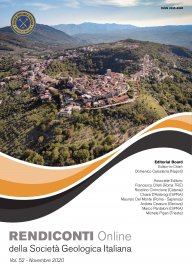
Rapid mapping accuracy assessment using low-cost UAV and open-source Structure from Motion
Ettore Potente (1), Cosimo Cagnazzo (1), Alessandro Deodati (2) & Giuseppe Mastronuzzi (1)
(1) - Department of Earth and Geoenvironmental Science, University of Bari – 70121 Bari.
(2) - Niteko S.r.l. – 74020 Montemesola (TA)
Corresponding author e-mail: ettore.potente@uniba.it
Volume: 52/2020
Pages: 55-61
Abstract
This study is part of an industrial research project in collaboration between the University of Bari, Niteko S.r.l. and the Geographisches Institut of Mainz. The project aims to develop low-cost technologies and methodologies to map areas affected by paroxysmal events.
Indeed, when a natural disaster occurs, one of the first steps in the emergency response is rapid mapping using time-efficient techniques in order to provide quick information for decision support system. Usually these techniques are not compliant with the quality standards, leading to the impossibility to assess the accuracy of the digital maps and models obtained.
A commercial UAV was used to map the upper part of a landslide in Pomarico (Southern Italy) by planning two flights, collecting 165 high-resolution images. The images were processed with the Structure-from-Motion technique, using the open-source software MicMac, leading to obtain the orthophoto, the dense cloud and the 3D model of the study area, within 12 hours of work.
In order to assess the accuracy of the model, 40 sample distances were measured on the field and compared with the same distances measured in the digital model. By the error distribution analysis, it was possible to identify a significant lack of homogeneity between the planar and altimetric model accuracy.
Keywords
Get Full Text